
It’s easy to get stuck in a rut with fruit. We see the same limited selection in local stores time and time again, then end up focusing on these, rather than looking for what else is out there. Yet, there are countless unusual and exotic fruits to try – including many many types of berries.
How many are there? Well, that depends on how you define berries.
According to the botanical definition, berries are fruits from the ovary of an individual flower. Many fruits that match that definition aren’t what we usually call berries at all, like cucumbers, tomatoes, and even bananas. Plus, fruits like strawberries and blackberries aren’t even considered berries under this definition.
In day-to-day use, we tend to define berries a little differently. We focus on small pulpy fruits that are often brightly colored. They don’t tend to have a large stone or pit, although there may be many little seeds present, like in raspberries.
Berries can be used in countless ways, including eating them as-is, sprinkling them on desserts, or using them to create jams, pies, preserves, or other foods. Of course, berries aren’t all created equal. They vary in their nutrients, color, shape, and flavor. Some are easy to find and may be commercially grown, while others are much more obscure.
Just like we did in our exotic fruits post, this list showcases a wide variety of berries – from the mundane to the exotic. We haven’t featured every single option here because honestly, the list would be endless if we tried that. But, don’t worry, there are plenty to choose from.
Also, for those who love fresh fruit, why not try a fruit of the month club? These are stunning ways to get delicious fruit shipped straight to your door. There are clubs to choose from, including some that focus on unusual and exotic fruits.
Types Of Berries
- Acai Berries
- Agarita Berries
- Amla
- Barbados Cherries
- Barberries
- Bearberries
- Bilberries
- Blackberries
- Blackcurrants
- Black Mulberries
- Blueberries
- Boysenberries
- Bunchberries
- Cape Gooseberries
- Chokeberries
- Chokecherries
- Cloudberries
- Cowberries
- Cranberries
- Currants
- Dewberries
- Elderberries
- Farkleberries
- Himalayan Blackberries
- Goji Berries
- Gooseberries
- Grapes
- Huckleberries
- Indian Plums
- Juneberries
- Juniper Berries
- Kiwiberries
- Lingonberries
- Loganberries
- Nannyberries
- Olallieberries
- Oregon Grapes
- Pineberries
- Raspberries
- Red Mulberries
- Salmonberries
- Seaberries
- Strawberries
- Sugarberries
- Tayberries
- Thimbleberries
- White Mulberries
- Wineberries
- Youngberries
- Berries That You Should Be Careful With
Acai Berries

Acai berries are often called a superfood. They’re high in antioxidants and other important plant-based compounds.
They’re also interesting as the berries aren’t normally eaten whole. Instead, they tend to be used in the form of powder or occasionally puree. For example, you’ll often see acai berry powder as a smoothie ingredient.
Focusing on powder rather than fresh berries has other advantages, as the berries come from South America. It would be difficult to ship them to the United States while still keeping them fresh.
Agarita Berries

Here’s a more local option. These berries can be found in Texas and go by many different names, including wild currant and agarito. Their red color makes them look beautiful and is one reason the berry is often used to make jelly and tarts.
Agarita berry isn’t cultivated, so users tend to harvest it wild instead. But, getting a full haul of berries can be difficult, as the plant leaves are covered in thorns.
Amla

This unusual type of berry isn’t one that you’re likely to be using in pies or other sweet treats – as amla berries tend to be fibrous and sour. Their green color isn’t all that attractive either.
Even so, amla berries have their advantages. They’re commonly used in ayurvedic medicine, in fresh, powdered, or dry forms. The berries do have multiple compounds that may promote health, including ellagic acids and flavonoids.
Barbados Cherries

This particular berry grows in the Caribbean. It can be found in some parts of Central America and South America too, but you won’t find it in North America. As the name suggests, the fruit here is a little like a cherry. The fruit is also larger than many other types of berries.
The fruit also happens to be quite juicy, but it doesn’t have the same sweetness that we find with regular cherries. Instead, Barbados cherries tend to have a sweet-sour flavor balance.
Barberries

Barberries mightn’t be your first choice of berry, as they are tiny and are very sour. Still, they can be appealing when they’re cooked with sugar. The sugar makes them more palatable, while the tart flavor is still distinctive.
This is one type of berry that you can easily source for yourself too, as barberry shrubs are ornamental and can make good landscaping choices.
The berries are often red, but you can find other colors, including purple, yellow, black, and even white. The tartness of the berries changes across varieties. With more than 400 species of the plant to choose from, there’s plenty of room for variation.
Bearberries

This berry seems to get its name from the fact that bears enjoy the berries from this plant. Humans do too, and many native people in arctic and subarctic parts of the world regularly harvest the berries.
The leaves of the plant are significant and can be harvested for herbal medicine. Both the leaves and the berries themselves are thought to be very healthy and could help with problems like back pain, arthritis, and headaches,
While the berries are found in the wild in subarctic and arctic regions, they can be grown in other parts of the world, including North America.
Bilberries

These berries don’t just look like blueberries; they’re actually an old cultivated version of the berry. You won’t find bilberries cultivated much anymore, as the fruit yield isn’t that great. Still, the plant often grows in the wild, so the berries can be harvested that way instead.
Wild bilberries are common in northern Europe, but they don’t often grow elsewhere. They’re not something that is sold in stores or markets often either, as the berries are very perishable and can’t be easily transported.
Blackberries

This should be a much more familiar type of berry. It’s widely cultivated, so you can easily buy blackberries at local stores and farmer’s markets. You don’t need to scrounge to find them at all.
The popularity of blackberries means they’ve been studied much more than more obscure types of berries. Potential health benefits include the chance to decrease stress, lower blood pressure, and decrease oxidative stress.
Blackberries are also well-known for their delicious flavor. All kinds of recipes take advantage of blackberries. You can even buy them online or find them frozen in your local grocery store.
Blackcurrants

Blackcurrants are an interesting berry. They grow in some parts of Europe and Asia, and the plant is widely cultivated. Blackcurrants are used to make preserves and in baking, much the same way as other berries. The liqueur crème de cassis is made from blackcurrants too, as is the non-alcoholic cordial Ribena.
Despite their popularity in Europe, blackcurrants aren’t all that common in the United States. This is largely because they were banned towards the beginning of the 1990s, as blackcurrants were a vector of a disease that could affect the logging industry.
Some states have lifted the ban on blackcurrants, allowing the berries to increase in popularity. However, some statewide bans still exist and blackcurrants aren’t as well-known as many other berries.
Black Mulberries

Black mulberries look a little like enlarged blackberries and have a similar flavor profile too. They only grow in warmer climates, so you’ll often see them in recipes for southern American cooks, but not in the north of the country.
Using these berries is easy, as they’ll work well in any dish that calls for blackberries.
Blueberries

Blueberries are another very familiar type of berry. They’re quite different than blackberries, but they do work well in plenty of dishes and sauces. You can eat them fresh too and many people do.
Blueberries are also famous for their high antioxidant content. You get more antioxidants per serving of blueberries than with almost any other type of berry.
Dark berries like these are often linked to improved heart health, partly because of their anthocyanins.
You can grow blueberries yourself too. Doing so does take some effort, as the berries need acidic soil.
Boysenberries

If you enjoy cooking with berries, then boysenberries are a perfect choice. They taste delicious, are easy to find, and have a greater depth of flavor than raspberries. Once again, many recipes use these berries.
The berries were initially developed as a cross between multiple berry species, including loganberries, raspberries, blackberries, and perhaps dewberries. Of course, boysenberries are now well-known in their own right.
The berries aren’t as vitamin-rich as blackberries, but they’re still a good source of fiber and aren’t lacking in nutrients.
Bunchberries
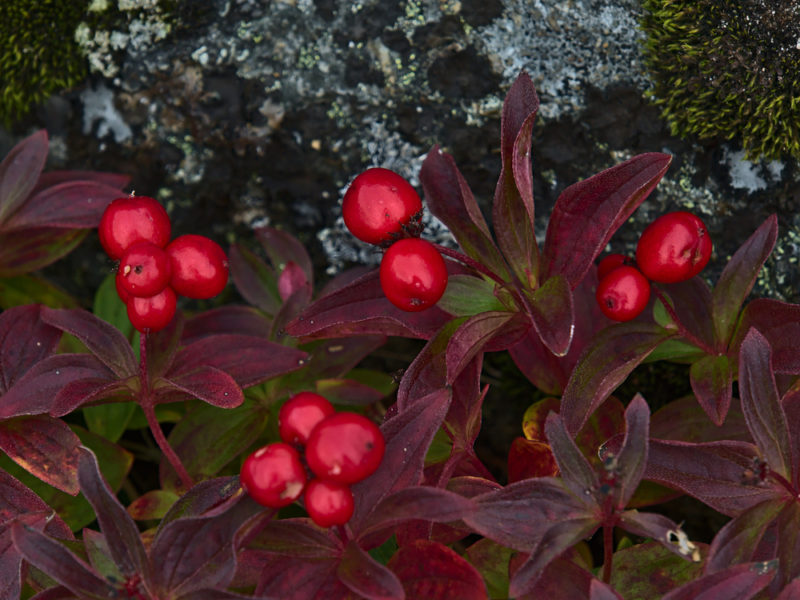
This type of berry can be found in the northern parts of North America. The fruit are small, red, and grow in small red clusters.
While you can eat the berries raw, they’re generally not worth the effort – as the flavor is bland. Still, you might use the bunchberries in cooking sometimes. They’re useful as a thickener for jams and perhaps in other recipes.
Cape Gooseberries

This berry goes by a few names, including groundcherry, physalis berry, and golden berry. The berries are round and orange, and enclosed in a type of leafy capsule. They’re naturally sweet and can taste a little tropical too.
Their antioxidant content makes these little berries a great way to improve health. They may also help improve immune system function and decrease inflammation.
Chokeberries

Chokeberries are small and black. Their flavor isn’t that exciting, but the berries are admired for their potential health benefits. Advantages include the chance to improve immune system function and decrease blood pressure.
You’ll also see chokeberries used in preserves and wine.
Chokeberry plants can be grown in home gardens and often show up as landscape plants. The plants grow in the wild too, so you may be able to forage for the berries.
But, be warned, chokeberries are rich in tannins and can be very bitter tasting. This is why most people use chokeberries in baking or in preserves, rather than eating them on their own. You can even find chokeberry powder. You can use this in smoothies, which is a great way around the bitterness of the berries.
There are also red chokeberries. These have a different flavor profile and may be more appealing.
Chokecherries

Chokeberries and chokecherries might have similar names, but the fruits are quite different. Chokecherries are often red and they have a delicious tart flavor. This makes them fantastic as a syrup or jam ingredient.
You could forage for the berries, as they grow wild in the west of the United States. The plants can be homegrown as well, giving you a ready supply of the berries right on your doorstep.
Cloudberries

You might have heard about this plant before. The berries look much like smaller and lightly colored raspberries. The plant is a hardy one. It even grows in the Arctic Circle, which is seriously impressive.
Cloudberry shrubs and trees turn up closer to home too, including some parts of Canada and Maine. However, the plants aren’t often cultivated and the fresh fruit is rarely sold.
The berries themselves aren’t that exciting. They’re often yellow or a pale red and have a bland flavor. You wouldn’t go out of your way to include them in recipes, but foragers do still eat them regularly.
After all, the berries are edible. They’re a source of energy, contain various nutrients, and offer valuable plant-based compounds. They provide more protein than many other types of berries too.
Cowberries

These edible round berries are easy to spot, as they look just like cranberries. They have a similar tartness as cranberries too, which is why they’re often used in preserves, sauces, and baked goods.
The plant can be found wild in Canada and north Europe. If you’re in those areas, you could forage for the berries and use them in your baking. The flavor isn’t quite the same as cranberries, but this isn’t a bad thing. It’s always nice to have some variation in your diet.
Cranberries

This small red berry is famous for its tart flavor. It often graces the Thanksgiving table, as cranberry preserves are an excellent contrast to roast chicken and turkey. Thanksgiving is far from the only time that you’ll see this berry. It is used throughout the year in many different ways.
You can find cranberries in the wild too, but they grow on ground level and can often be found in bogs.
The long growing season helps to make this a versatile fruit.
You can also find many cranberry-based products in local stores, including cranberry jam, cranberry jelly, and cranberry juice. Tart cranberry juice can be an excellent way to get the nutrients and antioxidants from cranberries. The juice is also a popular cocktail ingredient, like in the cosmopolitan cocktail.
Cranberry juice may have other benefits too, like helping with urinary tract infections.
But, if you’re going to buy cranberry juice, make sure that you check the ingredients label first. Most products will use some other types of juice to create a drink that tastes good.
The trick is to find a product that uses a decent amount of cranberry juice and doesn’t use too many additives.
Currants

We mentioned blackcurrants earlier, but there are actually multiple types of currants, including red, white, black, and purple ones. The small berries all come from plants in the Ribes family. Some of these are native to North America, and many are cultivated in Europe and other parts of the world.
Red currants are one of the most recognizable type of current, as they are bright red and shiny, so they look quite unusual. They have tangy and tart flavor. There is some sweetness too, so you can eat the berries fresh.
All types of currants work well in recipes too.
Currants aren’t difficult to use either. You can largely treat them like blueberries. They freeze well too, which is useful for removing the berries from their stem without damaging them.
We need to make a distinction here.
The word currant is also used for the Zante currant, which isn’t a currant at all. Instead, the fruit is simply a small dried grape (a raisin, in other words).
Dewberries

Dewberries are known for their intense flavor, which can be tart and mightn’t appeal to everyone. Still, many people find the berries delicious and satisfying.
You can also use them in cooking or to make preserves. Doing so makes it easy to balance out the bitterness with other flavors.
Elderberries
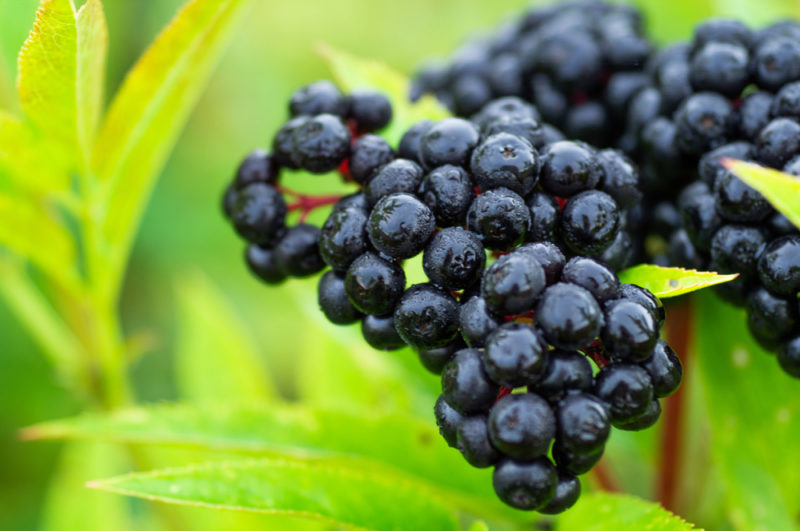
You might see elderberries often, but you’ve probably seen elderberry products. For example, elderberry wine is becoming popular and can be just as good as wine made from grapes instead. Elderberry syrup is sometimes used too and this can be delicious.
The plant is even more famous for its flowers. There are now countless elderflower products and the flowers are thought to have many health benefits.
The berries can be healthy too. They’re a potent source of antioxidants and contain many more anthocyanins than blueberries. However, it’s best to use the berries cooked rather than eating them raw. Elderberry tea is a good option here, along with elderberry syrup.
If you’re harvesting elderberries yourself, make sure to focus on ripe ones. Unripe elderberries aren’t toxic, but they can cause diarrhea. Eating large quantities at a time isn’t a good plan.
In fact, even the ripe berries can cause stomach upsets from time-to-time. Cooking or fermenting the berries is an easy way around this problem.
Farkleberries

While these berries have a fun name, they’re not as interesting as they sound. Instead, they’re small and don’t have much flavor. You could include them in baking or preserves for their color alone, but why bother with so many delicious options to choose from?
The berries are popular among animals and birds, so they never go to waste.
Himalayan Blackberries

As the name suggests, these berries are similar to the common blackberry. However, the berries are sweeter and larger. These features can be perfect when you’re cooking or baking with the berries, as you need to use fewer berries per recipe.
These berries often grow wild, giving people the chance to forage for them. They can also be cultivated in gardens.
Goji Berries

Goji berries have become famous. They originally come from the Himalayas and China, although you can now find goji berry products in many parts of the world.
The bright red berries are often called a superfood, due to their high antioxidant content. They also contain important plant-based nutrients for promoting eye health, like zeaxanthin.
Goji berries aren’t often cultivated in the United States, so fresh goji berries aren’t that common. Many people turn to dried berries instead. The dried berries are powerful, as you’re getting many nutrients packed into a small serving.
Alternatively, you can grow the berries at home and get fresh ones that way. The plant is tolerant of many conditions, including poor soils, drought, and heat. This tolerance can make goji plants perfect for home gardeners.
Gooseberries

Gooseberries fall into the Ribes family, much like currants. This means that they were covered in the 1990 ban and are only recently being grown again in some parts of the United States.
Like currants, gooseberries come in a range of colors. Some are green, yellow, or close to white, while others are more vibrant, with red or purple tones.
Gooseberries tend to be quite tart early on. This tartness makes them work well in baking, especially when you’re using them in a sugar-laden dessert, like a pie or a cobbler. Even so, they’re not as sour as lemons, so don’t be too worried about using them.
The flavor changes as the fruit ripens and you can end up with something similar to a grape. Still, ripe gooseberries aren’t easy to find, unless you’re growing them yourself, so you’ll often be working with the unripe version instead.
Grapes

We don’t normally call grapes berries. They’re just… grapes. Still, they are botanically classified as berries and have some similar features, so they’re worth including on this list.
Grapes come in many different types. They tend to be black, red, or green, with varying color intensity. Grapes are often eaten fresh or dried to make raisins. Some varieties have the right aromatics to be used to make wine and juice.
Grapes have some notable plant-based compounds too, including resveratrol, which is thought to improve heart health and protect against blood clots.
Huckleberries

Huckleberries look a lot like blueberries. They taste similar too and can be used in much the same way. Try including huckleberries in baked foods or jams.
The berries grow wild in many parts of the Pacific Northwest, so you can forage for them and use them in your cooking. The difference is that huckleberries aren’t cultivated all that often. This is a shame, as huckleberries contain less sugar than blueberries (and have fewer carbs too).
You might find the berries sold at some festivals or farmers markets, but it’s almost always easier to forage for the berries yourself.
Indian Plums

These beautiful berries aren’t that well-known, but they do have a role in Native American medicine. You can use them cooked or dried. Either option works perfectly.
Juneberries
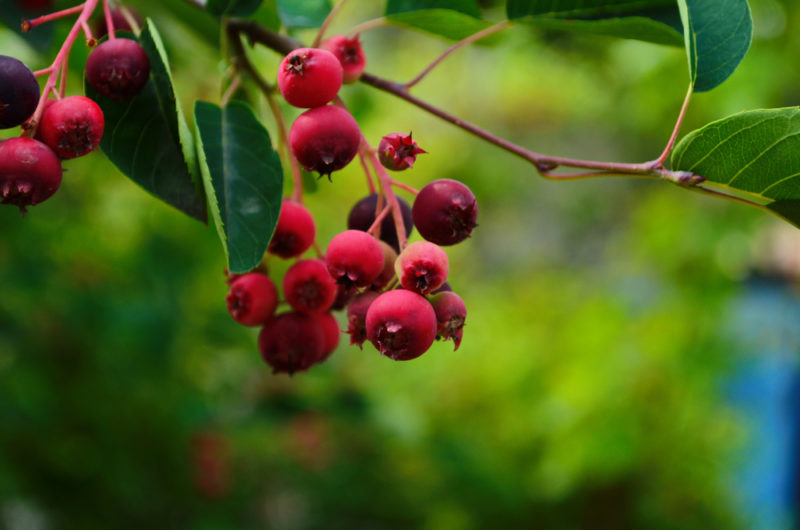
Juneberry plants are often grown as ornamentals and you can find them in the wild too. The berries don’t seem all that exciting at first glance.
Still, the berries are edible and they’re similar to blueberries in some ways. They have a nutty and sweet flavor that makes them fantastic for baking. Plus, you can use the berries exactly like you would blueberries. How’s that for simple?
Juniper Berries

Juniper berries are most well-known for their role in making gin. They also have some history in traditional medicine.
Juniper berries are edible, but they’re rarely used as-is. The berries simply don’t taste good, so it’s better to leave them for the gin instead.
Kiwiberries

These little berries are fascinating. They look much like a kiwifruit, except that the skin is smooth, crisp, and green, rather than being a fuzzy brown. The difference in skin means that you can eat the kiwiberries whole.
The similarities don’t stop there either. The little kiwiberries taste just like kiwis too.
These fascinating berries are now being cultivated in many parts of the world, so you might be able to find them locally.
They’re also a vitamin C powerhouse, with 100 grams of the berries giving you more than 400% of your daily vitamin C needs.
Lingonberries
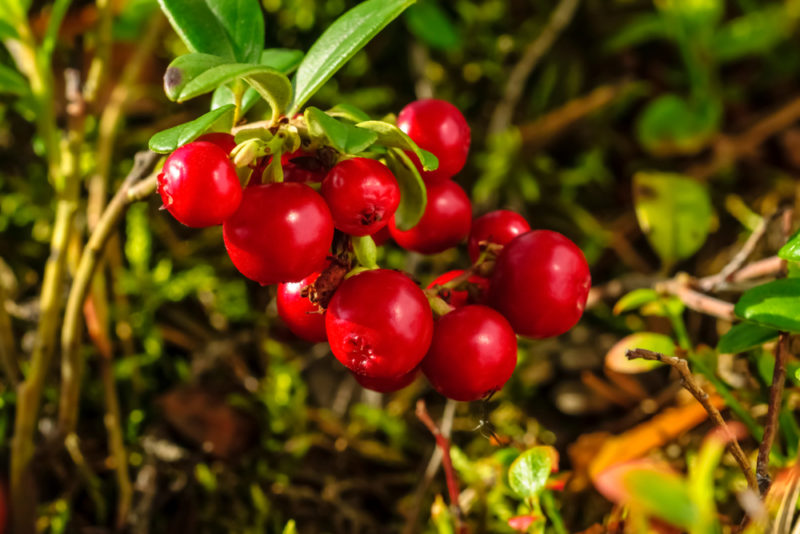
Lingonberries are another type of red berry that has a bitter flavor. While you mightn’t eat the berries raw, they can be perfect in many kinds of compotes, syrups, and smoothies.
The berries also offer health benefits, as they are rich in antioxidants and trace elements. Many people focus on lingonberry powder or supplements rather than the berries themselves because of the tartness of the berries.
Still, you could easily use the berries in recipes that have some sweet components, like a cobbler that uses a sweet berry too and perhaps some sugar.
Loganberries

Loganberries are the result of a raspberry and blackberry cross, which isn’t too surprising when you look at the berries. The flavor is distinctive – and the berries are worth trying if you enjoy blackberries or raspberries.
Loganberry plants can be grown in the same way as blackberries. You can prepare and cook the berries in just the same way as blackberries. Give them a try. You might even enjoy them more than the more familiar berries.
Nannyberries

These berries look a little like chokecherries and the shape is reminiscent of grapes too. You can easily use the berries to make preserves or syrups. You might eat the berries fresh, although cooking them is often more appealing.
Olallieberries

The olallieberry is a hybrid fruit. It’s not that common, so there hasn’t been much research into its benefits or nutritional content. Still, this is a dark black berry, so you can expect it to be high in antioxidants and anthocyanins.
Oregon Grapes
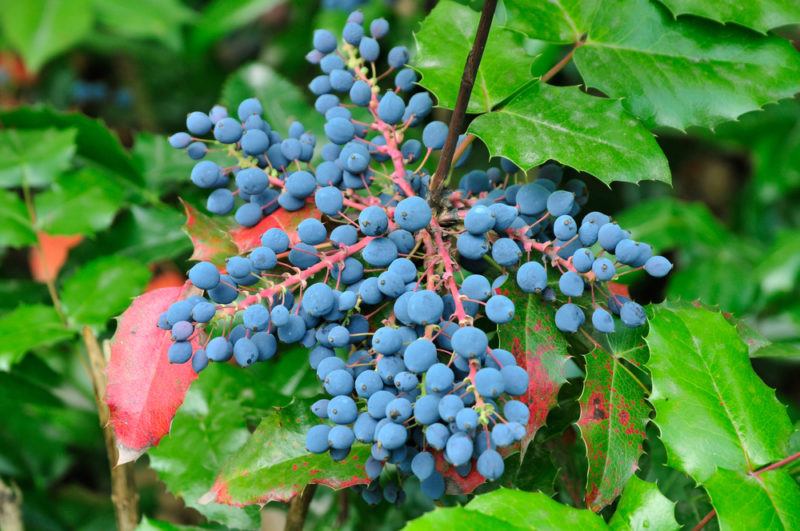
These berries have an amazing color and shape. This may be one reason why the plant is often grown as an ornamental. The berries are tart, but they’re still often used for wine or preserves. You can even eat them fresh, if you don’t mind your fruit on the tart side.
Pineberries

These berries look a little like white strawberries or perhaps the reverse of regular strawberries. The appearance isn’t so surprising as they are a cultivar of white strawberries. The flavor profile is interesting too, as the berries taste much like a pineapple.
You can use pineberries in the same way that you would strawberries. Why not slice some of these and serve them with sliced strawberries? The color contrast would be fantastic.
While the berries might be challenging to find, you can grow them at home. This will give you all the berries you need.
Raspberries

We can’t talk about berries without mentioning raspberries. They are one of the classic berries after all. Their sweetness is one reason that so many people love raspberries.
Red raspberries are the most common type, but there are some others as well, including purple and black raspberries.
There are golden raspberries too, including some that are pale enough to be almost white. These are harder to find and have their own unique flavor. They may be particularly powerful for their antioxidant content, as these berries can be more antioxidant-rich than regular raspberries.
Black raspberries, on the other hand, are rich in anthocyanins. This is often true for dark-colored fruit, and is a good reason to try black raspberries for yourself.
Red Mulberries

These fruits look a little like blackberries or like elongated raspberries. You can find red mulberry trees in many places throughout the United States.
The biggest problem is that the fruits don’t last long. They perish faster than most, so they leave a mess wherever the trees grow.
Salmonberries

The name salmonberry makes complete sense when you look at the light color of the berries. Like raspberries, you can eat salmonberries fresh, use them in baking, or include them in preserves.
And, like many fruits, salmonberries are rich in antioxidants and polyphenols. They could help boost your health in many ways. They’re delicious too, so how can you lose?
Seaberries

Seaberries might not be as well-known as acai berries, but both berries are considered superfruits. For seaberries, this reputation comes from the nutrient density of the berries.
The berries can be found in many places, including China, Russia, North America, and Western Europe. While they’re still fairly obscure, you should be able to find some if you do some hunting.
The berries’ bright yellow color makes them very appealing, as there aren’t many berries that look like this. They are delicious too, with a sweet flavor that has a slightly sour edge to it. You can eat the berries fresh or use them in recipes.
Strawberries

Strawberries are another classic. They’re denser than other types of berries, which isn’t a bad thing at all.
However, there’s a stark difference between the strawberries you find in the grocery store and those you grow at home. Homegrown strawberries tend to be smaller and have a much more intense flavor.
On the other hand, strawberries from the grocery store are often somewhat bland and overly sweet. Homegrown ones are always better, even if it takes some effort to grow them.
You can find sugarberry trees in many places throughout the southern United States. The trees produce small yellow and orange fruit.
Sugarberries

The berries are very popular among birds, but humans can eat them too. The taste is a little like a date, which might or might not be what you’re looking for.
Unlike most of the berries on this list, sugarberries have a large stone and very little flesh.
Tayberries

Tayberries are a hybrid fruit, but there’s some debate about the parent species. The berries might be a cross between black raspberries and loganberries, both of which are relatively unusual berries. Or, tayberries might come from blackberries and raspberries instead.
Either way, the berries are delicious. They’re similar to loganberries in some ways, although they tend to be sweeter.
It’s best to enjoy the berries raw, as they have such a fantastic flavor. Try eating them with ice cream or even just a little sugar. You can cook with them too. Tayberry jam is simply amazing. What about including the berry with other fruits in pies?
Thimbleberries

Thimbleberries look a lot like raspberries, which isn’t too surprising, as the two types of berry are related. You’ll find thimbleberries growing anywhere from north Mexico to Alaska, which is quite a range.
They can be used in the same ways as raspberries. So, try eating them fresh or including them in a jam.
While the berries are similar to raspberries, they are more perishable and don’t travel well. So, if you want the berries regularly, you’ll need to grow them for yourself.
White Mulberries

White mulberries don’t look very interesting. They have a subtle flavor that is reminiscent of honey. If you’re going to eat them fresh, look for slightly overripe white mulberries. These are the best.
Be careful with underripe white mulberries and other parts of the plant. Some reports suggest that the berries and the plants are completely safe for humans, while others suggest they are toxic.
Why take the risk? It’s best to focus on foods that you know won’t hurt you.
Wineberries

This is another species that is quite similar to raspberries. This time, the plant is often considered invasive, but the fruits are still delicious. They’re tarter than raspberries and are juicer too.
They’re a fantastic alternative to raspberries, which can get boring after a while.
Youngberries

Youngberry is another hybrid species. It was created from a blackberry and dewberry cross. You won’t find the berry often in the United States, but it is often grown in South Africa, Australia, and New Zealand.
Berries That You Should Be Careful With
The berries that we’ve featured so far are all ones that you can eat, if you can find them. The next berries, on the other hand, aren’t such a good idea. Many of them would make you sick if you tried to eat them fresh. Some might even kill you.
Baneberries
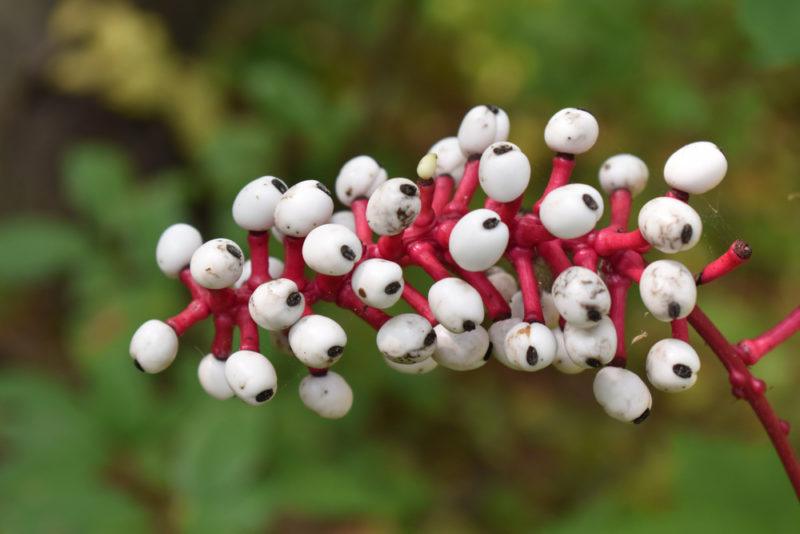
Baneberries are small and hard. They’re often red, but you can find white ones as well. The berries grow in some parts of North America, largely where it is subtropical or temperate. But, don’t go harvesting these berries, as they are toxic.
Bittersweet
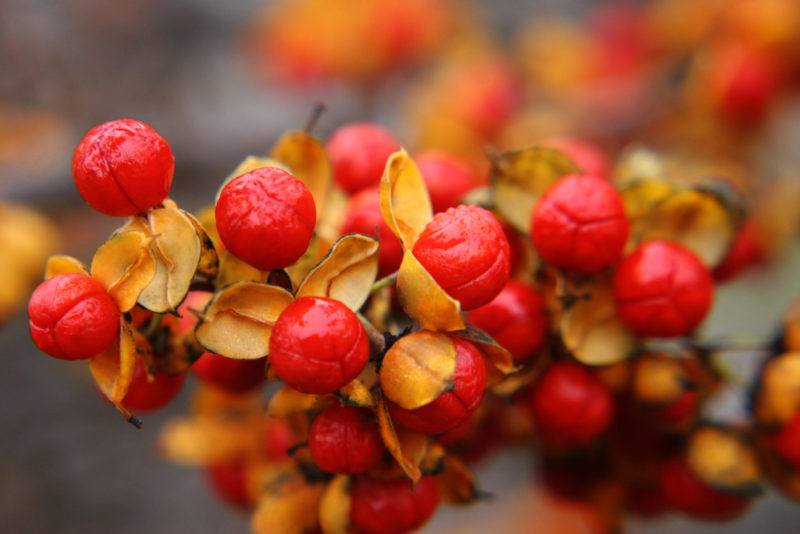
The name bittersweet suggests that these berries have a sweet-sour flavor, but that idea is only partly accurate. The berries are actually just very bitter. This isn’t something that you should find out for yourself, as the berries aren’t just bitter; they’re also toxic.
This is a type of berry that you might see locally, as they are native in Asia and Europe. They’re now present in North America too (largely as a type of weed).
Buffalo Berries
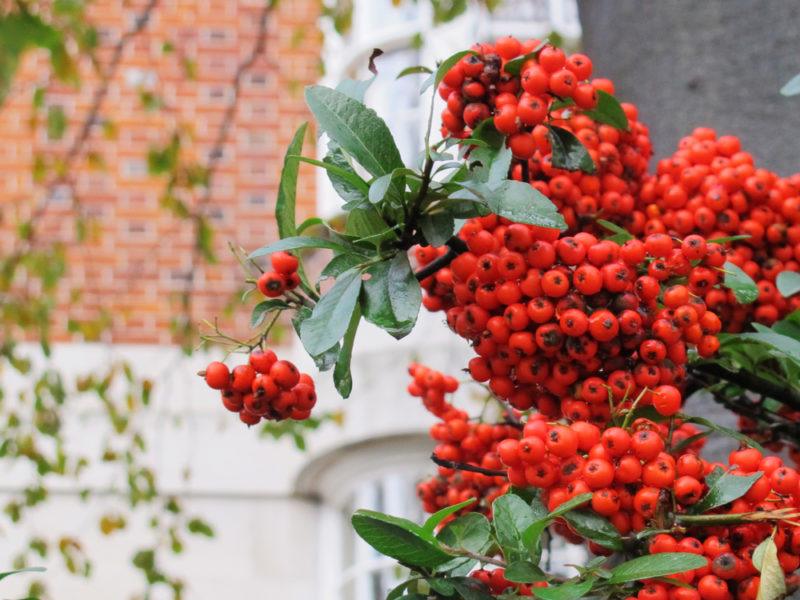
With their large red fruits, buffalo berries look unusual. Eating them raw can lead to diarrhea, but you can safely use the fruit once dried or as part of baked goods.
Holly

Holly is often linked with the holidays, particularly Christmastime. A sprig of holly, berries and all, is one of the easiest Christmas decorations ever.
But, while holly berries look delicious, don’t eat them. They’re very toxic. Even just two berries can be enough to cause death in some cases.
This might mean skipping on the holly if you have kids in the house. You never know what they’re going to put in their mouth.
Ivy

Ivy is often grown as an ornamental. It’s easy to see why too, as the plant has beautiful, large, dark green leaves. It’s a climber too, so you don’t need a lot of space to grow ivy.
The purple to black berries grow in clusters and look pretty amazing too. Once again, the berries are poisonous. So, don’t get tempted, even if you see birds having a go at them.
Snowberries

While they look amazing, snowberries aren’t a smart choice for eating. Most people can’t digest the berries well at all. For some, the berries may even be poisonous.
Still, the berries have their uses. You’ll sometimes find them in deodorants or soaps. They have medicinal properties as well and can be used to treat sores and burns in some cases.
Mistletoe

Like holly, mistletoe is often associated with Christmas. Kissing under the mistletoe has become a Christmas tradition and can be a lovely one.
The white berries of mistletoe make the plant look stunning, but the berries shouldn’t be eaten. The stems and leaves of the plant are just as toxic, so keep them well clear of your mouth.
Pokeberries

Pokeberries are pretty and look very similar to blueberries. But, looks can be deceiving. Every part of this plant is poisonous, including the berries.
Thankfully, it’s easy to tell pokeberries apart from blueberries. Blueberries have a star at their base, while pokeberries don’t.
Privet Berries

You’ll sometimes see privet berries sold for decoration and even as part of a bouquet. Despite this, the berries are entirely poisonous.
Yew Berries

Yew berries are another fruit that looks pretty, but shouldn’t ever be eaten. The berries are toxic, as are all other parts of the plant. Be especially careful of the leaves, as these can be lethal.





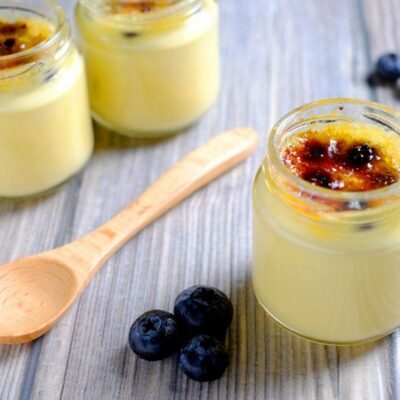











 Top 7 Puzzle of the Month Subscription Boxes of 2020
Top 7 Puzzle of the Month Subscription Boxes of 2020
Mostly our wild berries couldn’t find in the above list….which is from the Pakistan …
What are they called? I’ll add them to the list if I can find pictures!